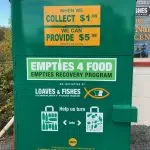
Dr. Bonnie Henry: more evidence needed, but safe supply policy seeing promising results
NANAIMO — One year into B.C.’s Prescribed Safer Supply policy, the provincial health authority says the program is working to reduce the harm caused by toxic street drugs.
The new report on a review of the policy comes on the heels of B.C. setting a new record for deaths caused by toxic drugs in 2023 when 2,511 people lost their lives including 116 from the Greater Nanaimo area.
Provincial health officer Dr. Bonnie Henry said during a briefing on Thursday, Feb. 1, the goal of the review is to better understand the benefits and concerns around safer supply and its impact on users, the healthcare system, and the community.
“We want to support healthcare providers and others who care for people who use drugs, and we need to address the underlying determinants of health. Things like stigma and shame, discrimination and racism, particularly, that lead to health inequities experienced by people who use drugs.”



